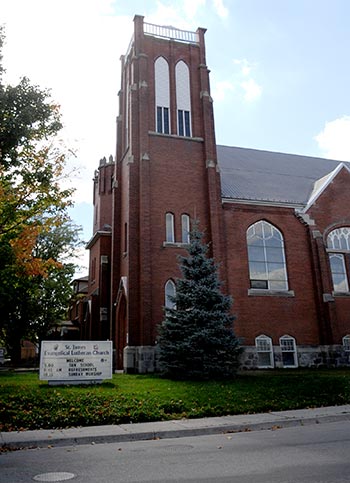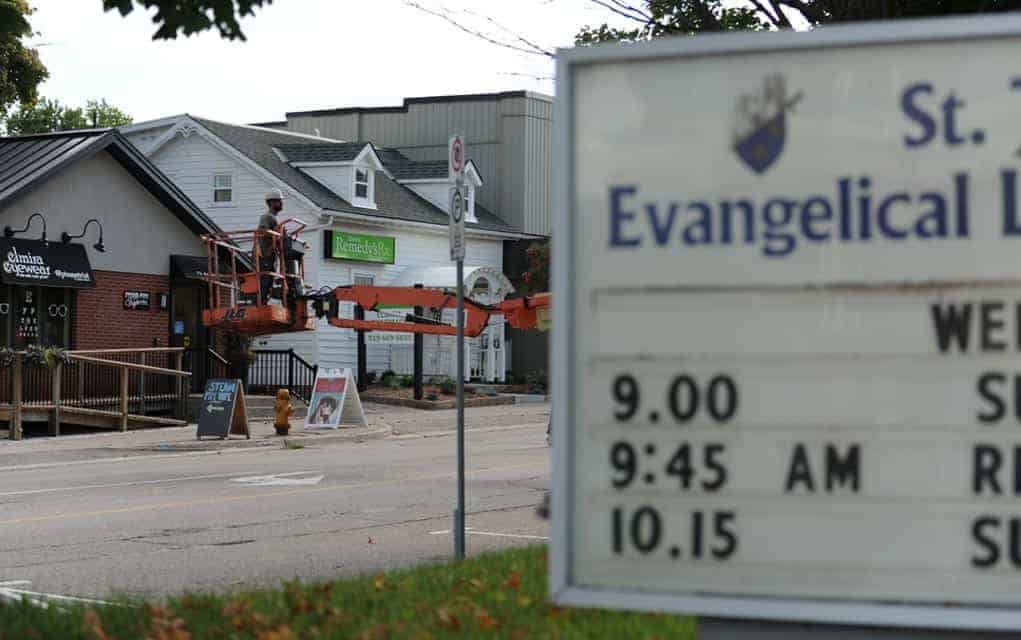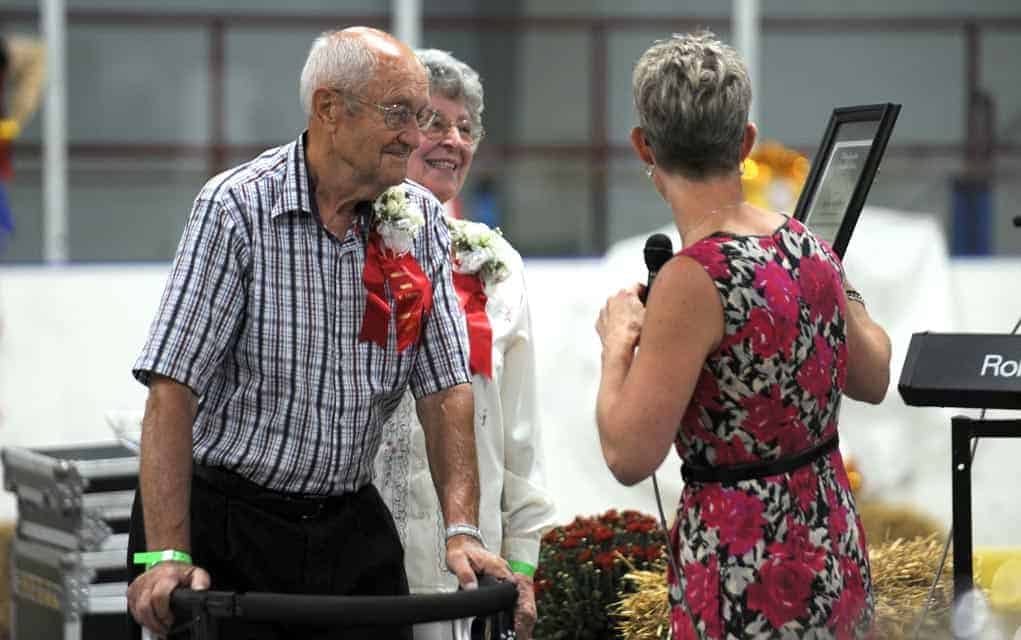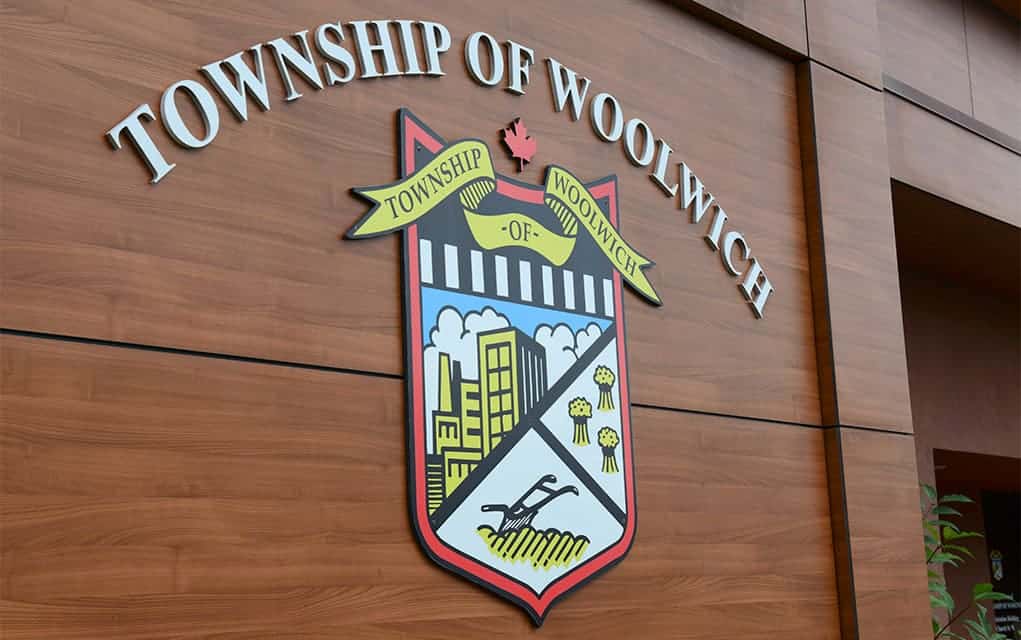Elmira’s St. James Evangelical Lutheran Church has been under construction for weeks, but that restoration which just finished is only one piece of the puzzle when it comes to the congregation’s overall revitalization efforts for the downtown church.
The church marked its 100th birthday last year and they’ve been busy renovating and working on opening the church to the wider public.
In July of 2015 they hosted a concert by Liona Boyd, which was the beginning of this push to make St. James Lutheran a community church.
“That was a part of our new initiative to try to make St. James a sustainable congregation in Elmira and we also as a congregation decided to look at ways of being sustainable while retaining our heritage building in downtown Elmira,” congregation member Linda Snyder said.
She and husband Paul Snyder explain what changes have taken place and what the plans for the future look like right now.

So far they’ve replaced the church’s heating system, floor and ceiling tiles and repaired external brick and concrete. They repaired the masonry in the towers and the capstones.
“We had a little delay over that too because the first capstones that we had put up were too big. It did not look true to the architecture of the original building, so we changed to smaller ones,” Linda explained.
They also discovered a large, active bee hive in one of the towers, which had to be removed. They called Ken Muschik from London, otherwise known as Ken the Bee Man, to remove and relocate the bees. It took him three days to remove the hive, which housed roughly 10,000 bees. A regular hive has anywhere from 5,000 to 10,000 bees.
“It had quite an area to grow into because there’s a double ceiling in the church. So there was probably a foot and a half gap between the two ceilings. They entered under the eaves and then formed their hives between these two ceilings,” Paul said.
Muschik extracted the bees by cutting a hole from the inside of the roof and then accessing the hive from the inside. He removed the hive by introducing some smoke to calm them down and then reached in and extracted the honeycombs and the bees that were working on the hives. The remaining bees were vacuumed out with a special vacuum cleaner that will suck out the bees without hurting them.
A standard hive has three levels to it, and each of them were about 11 inches in height. He took the honeycombs from the hive and used elastic bands to put them in to a new hive.
“The problem is that if a new hive is within five kilometres of an existing hive the bees will return to where they thought was home. We had to temporarily locate them,” Paul said.
They moved them to a farm farther than five kilometres away for 10 days. They got accustomed to the new location and they couldn’t find their way back. After that they were relocated to a farm on Northfield Drive which is closer to the church, but since they were relocated once they won’t find their way back.
“These are close friends of ours, but we had to caution them that these are Lutheran bees and to make sure they were okay with Lutheran bees being on their Mennonite farm. And of course they were with a chuckle,” Paul said with a laugh.
Muschik also had to remove all of the honey because leaving honey behind would attract other bees in the future. They monitored to make sure the queen bee was active and they were settling down because it’s a very disruptive process.
With all of that finished, the church is focusing on their community efforts, planning to continue to host concerts, making use of the church’s sanctuary, as well as making other space within the building available for rent.
“We’re actually talking with Liona Boyd already about coming back to do a Christmas concert in December. We totally filled the building when she was here in January in 2015. We’re thinking that having a Christmas concert, which would be music that’s different from what she did in that performance, would hopefully fill the church again,” Linda said.
They’re also interested in booking some local musicians and beginning to build a bit of a music culture for the community.
They may even partner with other local Lutheran congregations to share pastoral services in the future.
“We’ve had a consultation process to give all members an opportunity to contribute to developing ideas and then we’ve held some general congregation meetings to vote on them. We want St. James Elmira to be a community church and be a church that makes a contribution to the community, so opening our doors and having people make use of the building is something that we hope is a contribution to the community, but that it also helps us financially with some of our costs of keeping a heritage building in the downtown,” Linda said.
Right now they have seniors exercise programs, a karate group, and have had tutoring in the church. Previously the church was used for the Woolwich Counseling Centre and blood donor clinics, both of which have found alternate locations.
“We want to have sort of a social ministry role within the community, that we’re not just a church that’s looking inward in order to save our building. We want it to be a building in the Elmira community that can be a part of the community as well. The other thing is why are we having to look at these things to become sustainable is because like many churches the membership is aging and decreasing in size, so we have to look at new ways of doing things,” Linda said.









